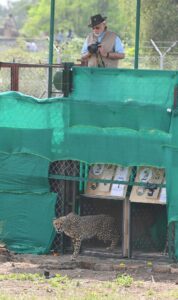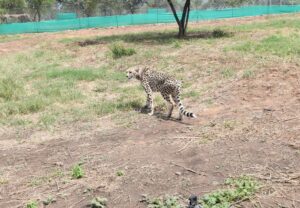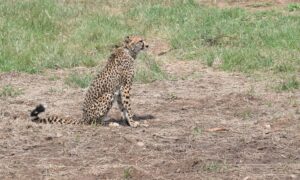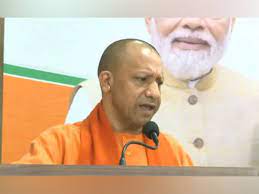Bringing Cheetahs back to India will help in the restoration of open forest and grassland ecosystems and also lead to enhanced livelihood opportunities for the local community
 KRC TIMES Desk
KRC TIMES Desk

The cheetah was declared extinct from India in 1952

The Prime Minister, Narendra Modi today released wild Cheetahs – which had become extinct in India – in Kuno National Park. Cheetahs – brought from Namibia – are being introduced in India under Project Cheetah, which is the world’s first inter-continental large wild carnivore translocation project. Out of the eight Cheetahs, there are five female and three male Cheetahs.
The Prime Minister released Cheetahs at two release points in Kuno National Park. The Prime Minister also interacted with Cheetah Mitras, Cheetah Rehabilitation Management Group, and students at the venue. The Prime Minister addressed the Nation on this historic occasion.
The release of wild Cheetahs by the Prime Minister in Kuno National Park is part of his efforts to revitalise and diversify India’s wildlife and its habitat. The cheetah was declared extinct from India in 1952. The Cheetahs that would be released are from Namibia and have been brought under an MoU signed earlier this year. The introduction of Cheetah in India is being done under Project Cheetah, the world’s first inter-continental large wild carnivore translocation project.

Cheetahs will help restore open forest and grassland ecosystems in India. This will help conserve biodiversity and enhance the ecosystem services like water security, carbon sequestration and soil moisture conservation, benefiting society at large. This effort, in line with the Prime Minister’s commitment to environmental protection and wildlife conservation, will also lead to enhanced livelihood opportunities for the local community through eco-development and ecotourism activities.

The historic reintroduction of Cheetahs in India is part of a long series of measures for ensuring sustainability and environment protection in the last eight years which has resulted in significant achievements in the area of environment protection and sustainability. . The coverage of Protected Areas which was 4.90% of the country’s geographical area in 2014 has now increased to 5.03%. This includes an increase in Protected Areas in the country from 740 with an area of 1,61,081.62 sq. km. in 2014 to the present 981 with an area of 1,71,921 sq. km.
Forest and tree cover has increased by 16,000 square km in the last four years. India is among few countries in the world where forest cover is consistently increasing
There has also been an increase in the number of community reserves. From just 43 in 2014 their numbers are more than 100 in 2019.

India is home to 52 Tiger Reserves covering approximately 75,000 Sq Km area in 18 States with approximately 75% population of the wild tiger at the global level. India achieved the goal of doubling the tiger numbers in 2018 itself, four years in advance of the targeted year 2022. The Tiger Population in India has increased from 2,226 in 2014 to 2,967 in 2018.
The budgetary allocation for tiger conservation has increased from Rs 185 crore in 2014 to Rs 300 crore in 2022.

The population of Asiatic Lions has shown a steady increase with a population of 674 individuals with an increased rate of 28.87 percent (one of the highest growth rates so far) from the 523 lions in 2015.
India now (2020) has 12,852 leopards as compared to the previous estimate of 7910 conducted in 2014. More than 60% increase in population has been recorded.
Governor, Madhya Pradesh Mangubhai Patel; Chief Minister, Shivraj Singh Chouhan; Union Ministers, Narendra Singh Tomar, Bhupender Yadav, Jyotiraditya M Scindia and Ashwini Chobey were among those present on the occasion.
Promotional





